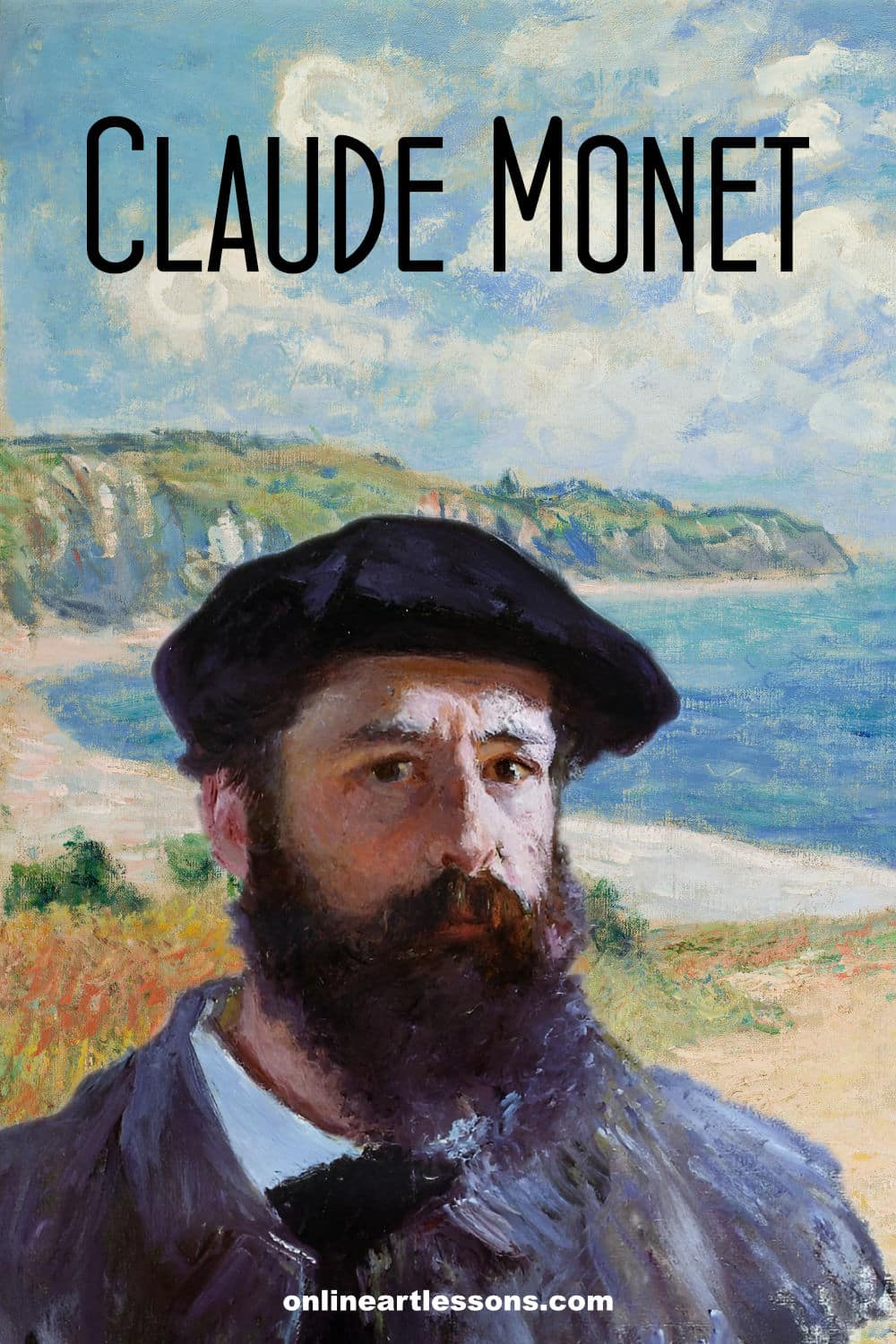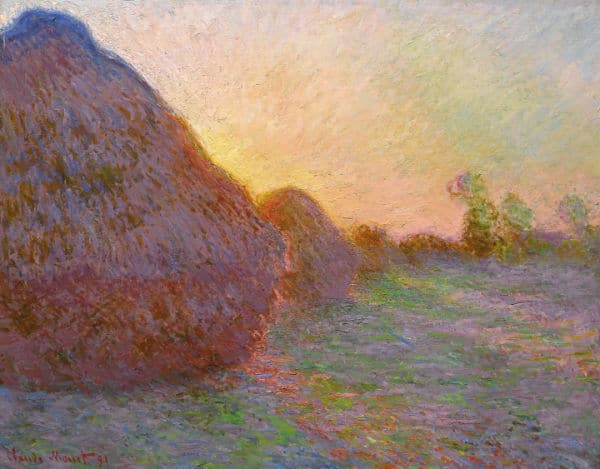
In 2019, Claude Monet’s Meules sold for a record-breaking $110.7 million at Sotheby’s in New York. It was the highest sum ever paid for an Impressionist painting, surpassing previous auction records and proving that Monet’s influence continues to grow nearly a century after his death. Originally purchased for just $2.5 million in 1986, this staggering price increase raises an intriguing question:
Why does Monet’s art endure?
Is it simply because his paintings are beautiful and calming, or is there something deeper at play?
Monet was more than just a master of light and colour—he was a rule-breaker, a pioneer, and a relentless innovator. He defied traditional art conventions, co-founding Impressionism and revolutionizing the way we experience paintings. From his groundbreaking brushwork to his immersive serial compositions, he reshaped the artistic landscape. Yet, behind his success lay years of struggle, financial hardship, and a perfectionism so intense that he destroyed over 500 of his own paintings.
Today, Monet’s paintings remain some of the most beloved and widely recognized in the world. His techniques continue to inspire artists, and his works fetch astronomical prices. In this article, we’ll explore Monet’s artistic evolution, his battles, and the innovations that cemented his place as one of history’s most influential painters.
Monet the Revolutionary Artist
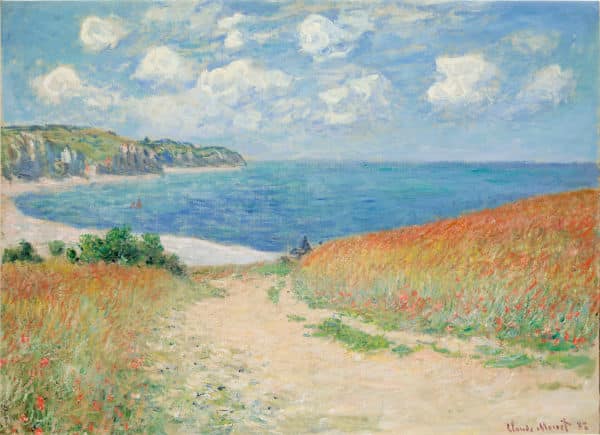
Claude Monet’s mastery of light and colour makes his work an enduring delight for viewers. However, to see his paintings as purely beautiful landscapes is to overlook his radical defiance of artistic conventions. Monet wasn’t just an artist—he was a rebel. His bold, unconventional techniques challenged the rigid expectations of 19th-century French art and paved the way for modernism.
The Birth of Impressionism
In the mid-1800s, the Académie des Beaux-Arts dominated the Parisian art world. This institution favoured realistic, highly detailed historical and religious paintings, rejecting anything that deviated from tradition. Monet, however, sought something different — a way to capture the fleeting effects of light, movement, and atmosphere.
When Monet’s painting Impression, Sunrise was displayed in 1874 at an independent exhibition, it shocked critics. The brushwork was loose, the details were vague, and the entire composition seemed unfinished. One critic, Louis Leroy, mockingly described it as mere “impressionism” — a term meant as an insult. Yet Monet and his fellow artists embraced the label, and thus, the Impressionist movement was born.
Impressions were not to be exhibited, they were not seen as finished works. But Monet turned that on its head and said, why isn’t it finished?
Breaking Free from the Studio
Another radical aspect of Monet’s work was his technique of painting en plein air—outdoors. Traditional painters created sketches outside but finished their masterpieces in studios. Monet, however, believed that to truly capture the essence of light and nature, he had to paint directly in front of his subject. This approach allowed him to capture fleeting moments—a sunrise over the water, the shifting shadows on a haystack, or the reflections of water lilies at different times of day.
His dedication to painting light and colour as they appeared in the moment gave his work a vibrancy and immediacy never seen before. While other artists carefully blended their brushstrokes to create a polished look, Monet applied paint in quick, visible strokes, breaking the rules of classical realism.
The Impressionist Struggle
Despite the beauty of his work, Monet’s early career was filled with rejection and struggle. The prestigious Salon de Paris, which dictated artistic success at the time, repeatedly dismissed his paintings. Critics and traditional artists saw Impressionism as crude, unfinished, and careless.
Yet Monet refused to conform. Instead of changing his style, he and his peers organized The First Impressionist Exhibition in 1874—the event that would redefine modern art. Though it was met with ridicule at the time, this independent exhibition set the foundation for a new era of artistic freedom.
Monet’s Legacy as an Artistic Revolutionary
Monet’s willingness to challenge the status quo transformed the art world. His radical brushwork, dedication to outdoor painting, and focus on capturing light and movement helped shift artistic priorities away from realism and toward personal expression.
By rejecting the artistic norms of his time, Monet laid the groundwork for Post-Impressionism, Fauvism, and even Abstract Expressionism decades later. Today, Impression, Sunrise is recognized as one of the most important paintings in art history—the catalyst for a movement that changed everything.
Monet’s Artistic Innovations
Changing the Way We See Art
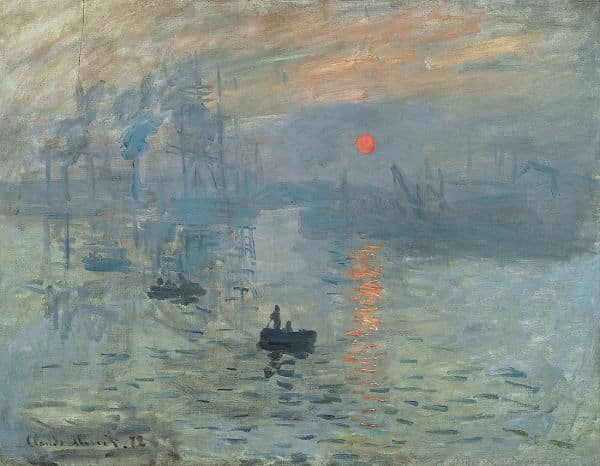
Claude Monet didn’t just revolutionize what artists painted—he transformed how paintings were experienced. His work broke free from traditional compositions, challenged the way colour and light were used, and introduced a new way of seeing art. His innovations laid the groundwork for modern art movements and reshaped the very nature of artistic perception.
The Power of Light and Colour
One of Monet’s greatest breakthroughs was his ability to capture light in motion. Unlike academic painters who depicted static, carefully controlled lighting, Monet’s paintings convey the fleeting nature of daylight—its shifting tones at sunrise, the shimmering reflections on water, and the golden glow of late afternoon.
His brilliant use of colour was equally radical. Instead of relying on black for shadows, he used bold blues, purples, and oranges to depict natural lighting effects. He embraced pure, unmixed colour, applying it in short, visible strokes that allowed the eye to blend the hues rather than the brush. This gave his paintings an unparalleled vibrancy that remains striking even today.
Colour is my daylong obsession, joy, and torment.
Monet’s later works, particularly those painted after his cataract diagnosis, became even more daring. As his eyesight deteriorated, his palette shifted toward warmer tones and hazy forms, creating almost abstract compositions. Some art historians believe his later Water Lilies series foreshadowed the rise of Abstract Expressionism, with its vast, immersive fields of colour.
Serial Paintings: Monet’s Immersive Vision
Monet’s most innovative idea was his approach to serial paintings—a groundbreaking concept that redefined how artworks interact with one another.
Instead of painting a single, standalone scene, Monet captured the same subject under different lighting conditions, emphasizing how light transforms perception. His Haystacks (1890-91), Rouen Cathedral (1892-94), and Water Lilies (1905-26) are all series that explore this concept.
I do what I can to render what I experience before nature.
His most ambitious project, the Nymphéas (Water Lilies) series, took this idea even further. These massive canvases, displayed in an elliptical arrangement at the Musée de l’Orangerie in Paris, create an immersive experience—almost as if the viewer is stepping into Monet’s garden at Giverny.
This installation-like approach was radical at the time, and it influenced modern gallery curation. Before Monet, paintings were viewed as isolated pieces. He reimagined how multiple works could create a unified experience, an approach later seen in abstract art and installation pieces.
The Brushwork That Defied Tradition
Monet’s expressive, quick brushstrokes were a stark departure from the meticulously blended strokes of classical painters. His technique gave his paintings an energy that made them feel alive.
Instead of hiding brushstrokes, he celebrated them, allowing the texture of paint to contribute to the composition.
He often painted wet-on-wet, layering colours directly on the canvas rather than waiting for each layer to dry.
His paintings emphasized motion, perception, and atmosphere rather than photographic accuracy.
This technique directly inspired later movements like Fauvism, Expressionism, and Abstract Expressionism, where brushstrokes became an expressive force rather than a hidden tool.
Monet’s Influence on Modern Art
Monet’s fearless experimentation not only defined Impressionism but also laid the foundation for modern art. His rejection of realism in favour of capturing experience encouraged later artists to push the boundaries of artistic expression.
From Vincent van Gogh’s swirling skies to Mark Rothko’s atmospheric colour fields, Monet’s innovations live on in some of the most iconic paintings of the 20th and 21st centuries.
His work forced viewers to engage with paintings differently, to appreciate the beauty of imperfection, and to see the world in a new light—just as Monet saw it.
Monet the Entrepreneurial Artist
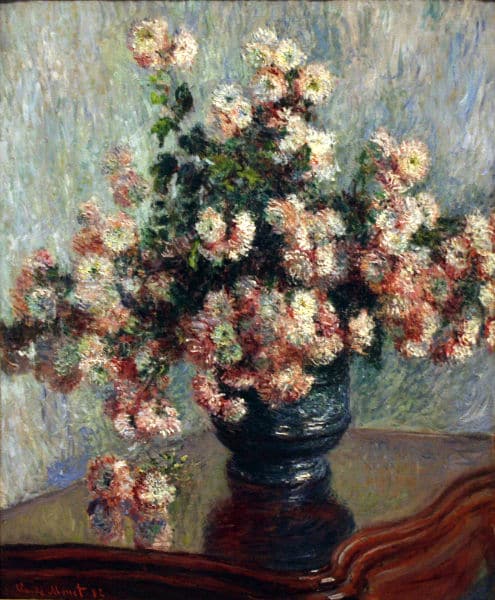
Claude Monet was not just a revolutionary artist—he was also a savvy entrepreneur who understood the importance of promoting his work. While he is often celebrated for his artistic genius, his ability to market himself and build a successful career was equally crucial to his legacy. From his early days selling caricatures to securing wealthy patrons and dealers, Monet knew how to navigate the business of art.
From Starving Artist to Self-Sufficient Painter
Despite his talent, Monet’s early career was financially unstable. Like many avant-garde artists, he faced rejection from the Salon de Paris, the prestigious art institution that determined artistic success at the time. Without its approval, selling paintings was difficult, and Monet often struggled to support his family.
His financial troubles reached a breaking point in the 1860s, when he found himself unable to pay rent or buy supplies. In desperation, he even attempted suicide by throwing himself into the River Seine—an indication of how dire his situation had become.
Yet, Monet refused to give up. Instead of conforming to academic art standards to gain financial stability, he built his own audience by organizing exhibitions outside the Salon.
I’m good for nothing except painting and gardening.
His first real breakthrough came when Louis Joachim Gaudibert, a wealthy shipowner, became his patron. Gaudibert commissioned portraits and supported Monet financially, allowing him to continue painting in his preferred Impressionist style.
Monet’s First Art Dealer
One of Monet’s most important business decisions was partnering with Paul Durand-Ruel, a forward-thinking art dealer who saw potential in the Impressionists. Unlike traditional dealers who focused on Salon-approved works, Durand-Ruel believed in creating a market for modern art.
-
- He purchased Monet’s works in bulk, ensuring the artist had financial security.
- He introduced Impressionist paintings to collectors in Britain and the U.S., helping Monet gain international recognition.
- He used strategic marketing, promoting Monet’s paintings as exclusive and innovative—a tactic that helped increase their value over time.
By the 1880s and 1890s, Monet was finally achieving commercial success. His paintings were selling consistently, and he was able to purchase his famous house in Giverny, where he would spend the rest of his life.
The Role of Exhibitions in Monet’s Success
Monet understood that visibility was key to selling art. Instead of waiting for approval from traditional institutions, he helped organize Impressionist exhibitions, bringing his work directly to the public.
-
- The First Impressionist Exhibition (1874) was a bold marketing move, showcasing the movement’s unique style and drawing media attention.
- He collaborated with fellow Impressionists, such as Renoir and Degas, to create a strong artistic brand.
- His participation in international exhibitions introduced his work to collectors outside France.
These efforts shifted the power dynamic in the art world, giving modern painters more control over their careers.
Monet’s Ability to Adapt for Financial Survival
Although Monet was dedicated to Impressionism, he was also practical when needed. In times of financial struggle, he altered his painting style to appeal to buyers.
For example, his early commissioned portraits, such as Madame Louis Joachim Gaudibert, show a more traditional approach compared to his later, looser brushwork. While these works were not as revolutionary, they helped sustain him financially until his Impressionist paintings gained traction.
This adaptability reflects Monet’s strategic mindset—he was willing to make short-term compromises while staying true to his artistic vision in the long run.
The Monet Market Today
Monet’s financial success in his lifetime laid the groundwork for the astronomical value of his works today. His business acumen—combined with the marketing efforts of dealers like Durand-Ruel—created a legacy where his paintings are now among the most expensive in the world.
-
- In 2019, Meules sold for $110.7 million, breaking records for an Impressionist painting.
- His Water Lilies series has become one of the most sought-after collections in art history.
- Museums and collectors worldwide continue to invest millions in Monet’s works, solidifying his status as a commercial and cultural icon.
His ability to balance artistic integrity with smart business strategies is a key reason why Monet’s art endures today.
Monet the Perfectionist
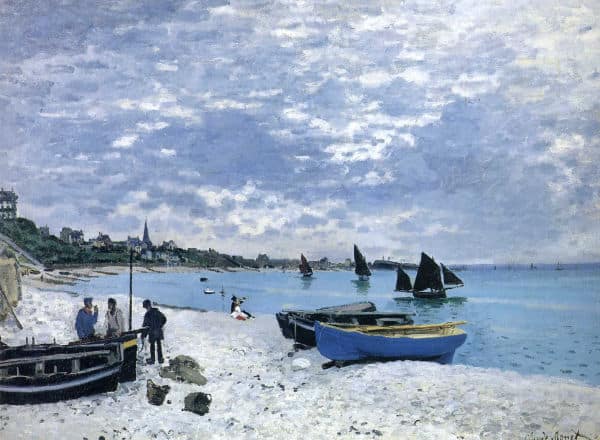
Claude Monet’s legacy is defined by his mastery of colour, light, and atmosphere, but behind his artistic genius lay a relentless drive for perfection. His pursuit of excellence was so intense that he often destroyed his own work, refusing to let anything subpar leave his studio. This perfectionism was both a source of brilliance and personal torment, shaping his career and contributing to his lifelong struggles with self-doubt and mental health.
Monet’s Habit of Destroying His Own Paintings
Few artists have been as ruthless with their own work as Monet. He would frequently slash, burn, or discard paintings he deemed unsatisfactory—sometimes even after they were finished. Over the course of his career, he is believed to have destroyed more than 500 paintings.
One of the most dramatic examples occurred in 1908, when Monet, overwhelmed with frustration, took a knife to at least 15 of his Water Lilies paintings. This was no impulsive act—he deliberately ruined pieces that others considered masterpieces, driven by an internal standard that few could match.
His frustration wasn’t just with individual paintings; he also postponed exhibitions multiple times, feeling that his works weren’t ready to be seen by the public.
I’m never satisfied with my work. I am always destroying some of my canvases.
Struggles with Criticism and Rejection
Monet’s perfectionism was intensified by the harsh criticism he faced in his early career. The Salon de Paris repeatedly rejected his submissions, dismissing his loose brushwork and unconventional use of colour as careless and unfinished.
-
- Critics called Impressionism a “childish” and “lazy” approach to painting.
- Some described his works as “mere daubs of paint” instead of serious art.
- Monet was ridiculed for painting ordinary scenes instead of grand historical or religious subjects.
These attacks had a deep psychological impact on Monet. Though he remained outwardly defiant, he struggled internally with self-doubt. His early financial struggles and rejection from the establishment left him feeling like an outsider for much of his life.
Monet’s Battle with Depression
Monet’s perfectionism and repeated setbacks took a toll on his mental health. His financial struggles, the death of loved ones, and artistic frustrations led to severe periods of depression.
One of his darkest moments came in the 1860s, when—faced with mounting debts and rejection from the Salon—he attempted suicide by jumping into the River Seine. Fortunately, he survived, but this episode reveals the depth of his despair.
Later in life, as his cataracts worsened, Monet’s frustration with his failing eyesight caused even more distress. He feared he would lose the ability to paint, a thought that devastated him.
Despite these challenges, Monet never stopped pushing himself. Even in his final years, he continued to paint obsessively, experimenting with colour and abstraction in ways that would influence generations of artists.
Monet’s Perfectionism: A Double-Edged Sword
While Monet’s perfectionism caused him great suffering, it was also the reason for his artistic excellence.
-
- It drove him to continuously refine his techniques, ensuring that only his best work survived.
- It pushed him to develop new methods of capturing light and atmosphere, leading to some of his greatest innovations.
- It set a high standard for Impressionist art, ensuring that the movement would be respected in later years.
Unlike some artists who became complacent with success, Monet remained his own harshest critic, ensuring that every piece he completed was something he could stand behind. His destroyed paintings were not failures but sacrifices—a necessary part of his pursuit of artistic perfection.
Today, this relentless dedication is part of what makes his surviving works so powerful. Every Monet painting we see is one that survived his own brutal standards, a masterpiece that met the impossible expectations of its creator.
Monet’s Final Years
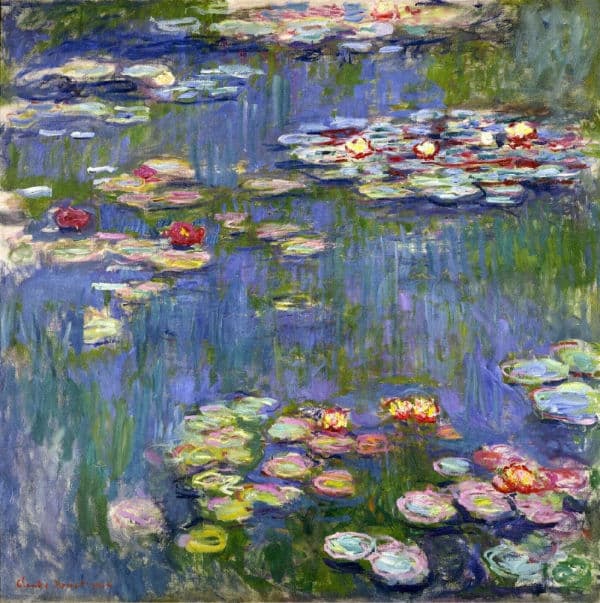
As Claude Monet aged, his work became more daring, his techniques more expressive, and his influence on modern art more profound. Even as his health deteriorated, he continued to paint relentlessly, pushing his style toward abstraction and paving the way for the artistic movements that followed.
His later years were marked by both triumph and struggle. He achieved global recognition and financial success, yet he battled failing eyesight, personal losses, and the weight of perfectionism. Despite these challenges, he remained dedicated to his artistic vision, leaving behind a legacy that transformed the trajectory of art history.
Monet’s Battle with Cataracts and Its Impact on His Art
By the early 1900s, Monet’s eyesight was severely compromised due to cataracts, which blurred his vision and altered his perception of colour. This had a dramatic effect on his paintings:
-
- His palette shifted—colours became warmer and more intense, with more dominant reds and yellows.
- His brushstrokes became looser, almost abstract, as he relied on memory and instinct rather than precise visual details.
- Many of his later works, particularly the Water Lilies series, display a dreamlike, almost surreal quality as a result.
Art historians believe his cataracts may have contributed to his experimentation with abstraction, foreshadowing movements like Abstract Expressionism decades later.
In 1923, Monet underwent surgery on one eye, restoring part of his sight. Some reports suggest that he may have gained the ability to see ultraviolet light, which could explain the cooler, bluish tones in some of his later works.
I see blue… I no longer see red or yellow… What shall I do?
The Water Lilies: Monet’s Final Masterpiece
Monet’s Water Lilies series stands as his most ambitious and enduring artistic achievement. Painted over the last two decades of his life, these vast, immersive works were designed to surround the viewer, creating a sense of endless space and movement.
The most famous of these, now housed in the Musée de l’Orangerie in Paris, consists of eight 14-foot-wide panels arranged in an elliptical room. Monet envisioned this installation as a “haven of peace”, offering solace to those who viewed it.
It gives the illusion of an endless whole, of a wave with no horizon and no shore.
This project represents the culmination of Monet’s lifelong obsession with light, water, and nature. It also cemented his status as a pioneer of modern art, influencing later painters who embraced abstraction and immersive compositions.
Monet’s Influence on 20th-Century Art
Monet’s innovations did not end with Impressionism. His later works directly influenced some of the most important modern art movements, including:
Abstract Expressionism – Artists like Mark Rothko, Jackson Pollock, and Helen Frankenthaler drew inspiration from Monet’s large-scale Water Lilies panels, particularly their immersive, emotional impact.
Fauvism – Henri Matisse and the Fauves adopted Monet’s bold use of colour and expressive brushwork.
Minimalism & Colour Field Painting – Rothko’s colour fields reflect Monet’s focus on atmosphere and mood rather than narrative or form.
The idea of paintings as experiences, rather than mere representations, can be traced back to Monet’s late works. His emphasis on perception, light, and emotion became central themes in 20th-century art.
Monet was the bridge between Impressionism and modern abstraction.
The Monet Revival: From Forgotten to Revered
Although Monet was widely respected by the time of his death in 1926, his reputation declined for a few decades as newer modernist movements took the spotlight. However, in the mid-20th century, his work experienced a dramatic resurgence:
In the 1950s and 60s, Abstract Expressionists like Pollock and Rothko publicly credited Monet as a major influence.
Major retrospectives and exhibitions in Europe and the U.S. revived interest in his work.
The market for Monet paintings skyrocketed, culminating in record-breaking auction sales.
Today, Monet is one of the most celebrated and valuable artists of all time, proving that his impact on the art world is far from over.
Why Monet’s Art Endures
Monet’s enduring popularity comes down to more than just aesthetic beauty. His paintings are alive with emotion, movement, and energy, inviting the viewer into his world. His revolutionary techniques changed the way artists thought about light, colour, and composition, paving the way for modern art.
But perhaps most importantly, Monet’s work resonates because it captures something universal—the passage of time, the changing of seasons, and the fleeting beauty of the world around us.
More than a century after his death, Monet’s paintings still sell for millions, hang in the world’s greatest museums, and continue to inspire new generations of artists. His legacy is not just one of colour and brushstrokes, but of vision, perseverance, and artistic freedom.
I hope you enjoyed this article. If you did you will enjoy the biography of another great artist: Leonardo daVinci.
Pin Me
